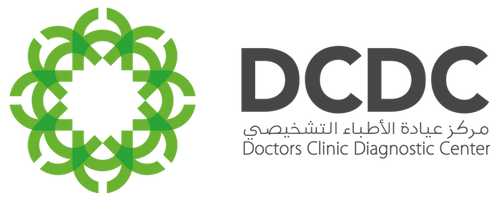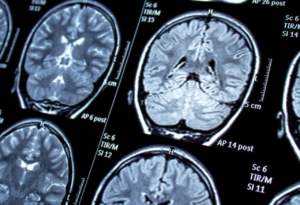Child development is a complex, multifaceted process influenced by a myriad of factors, ranging from genetics and environment to nutrition and social interactions. Among these, the brain plays a central role, orchestrating various developmental milestones from infancy through adolescence. As our understanding of neurology advances, so does our ability to positively influence child development through targeted interventions. This blog explores the revolutionary impact of neurological interventions on child development, highlighting the promising outcomes and future potential of this innovative approach.
Understanding Neurological Interventions
Neurological interventions encompass a wide range of techniques and treatments aimed at modifying brain function and structure to improve outcomes in individuals with Pediatrics or developmental delays. These interventions can be pharmacological, such as medications that alter neurotransmitter activity, or non-pharmacological, including neurofeedback, brain stimulation, and cognitive-behavioural therapies. The goal is to leverage the brain’s plasticity – its ability to reorganise and form new connections – to enhance developmental trajectories and mitigate the impact of various neurological conditions.
Early Intervention: The Critical Window
Research consistently underscores the importance of early intervention in child development. The early years of life are characterised by rapid brain growth and development, making this period a critical window for intervention. During this time, the brain is exceptionally malleable and responsive to environmental inputs, which means that timely and targeted neurological interventions can have profound and lasting effects.
For instance, early intervention programs for children with autism spectrum disorder (ASD) often incorporate a combination of behavioural therapies and neurological interventions. Applied Behavior Analysis (ABA) is a well-established approach that, when combined with techniques like transcranial magnetic stimulation (TMS) or neurofeedback, can significantly improve social, communication, and cognitive skills in children with ASD.
Neurofeedback: Training the Brain
One of the most promising neurological interventions in child development is neurofeedback. This technique involves monitoring brain activity in real-time and providing feedback to the individual, often through visual or auditory cues, to help them self-regulate their brain function. Neurofeedback has been used to treat a variety of conditions, including attention-deficit/hyperactivity disorder (ADHD), anxiety, and learning disabilities.
For children with ADHD, neurofeedback can enhance attention, reduce hyperactivity, and improve executive function. By training children to produce brainwave patterns associated with focus and calmness, neurofeedback helps them gain better control over their attention and behaviour. This non-invasive intervention is particularly appealing to parents and practitioners seeking alternatives to medication.
Brain Stimulation Techniques: Enhancing Neural Connectivity
Brain stimulation techniques, such as transcranial magnetic stimulation (TMS) and transcranial direct current stimulation (tDCS), are gaining traction as effective neurological interventions for child development. These non-invasive methods involve applying electrical or magnetic fields to specific brain regions to modulate neural activity.
TMS, for example, has shown promise in treating depression and anxiety in adolescents. By targeting brain areas involved in mood regulation, TMS can help alleviate symptoms and improve overall emotional well-being. Similarly, tDCS has been explored for its potential to enhance cognitive functions, such as memory and learning, in children with developmental disorders.
Pharmacological Interventions: Balancing Brain Chemistry
While non-pharmacological interventions offer numerous benefits, pharmacological treatments remain a cornerstone of neurological intervention for many conditions. Medications that target neurotransmitter systems can be highly effective in managing symptoms and improving quality of life for children with neurological and developmental disorders.
For example, stimulant medications like methylphenidate are commonly prescribed for children with ADHD. These drugs enhance the activity of dopamine and norepinephrine in the brain, which helps improve attention, focus, and impulse control. Similarly, selective serotonin reuptake inhibitors (SSRIs) are often used to treat anxiety and depression in children and adolescents, helping to restore balance to brain chemistry and improve mood.
The Role of Technology in Neurological Interventions
Advancements in technology have significantly expanded the scope and efficacy of neurological interventions in child development. From sophisticated brain imaging techniques to wearable devices that track neural activity, technology is transforming the way we diagnose, monitor, and treat neurological conditions.
Functional magnetic resonance imaging (fMRI) and electroencephalography (EEG) provide detailed insights into brain function, allowing clinicians to tailor interventions to the specific needs of each child. Virtual reality (VR) and computer-based cognitive training programs offer engaging. Interactive ways to enhance cognitive and social skills in children with developmental disorders.
Case Studies: Success Stories of Neurological Interventions
The impact of neurological interventions on child development is best illustrated through real-life success stories. Consider the case of Sarah, a seven-year-old girl diagnosed with ASD. Through a combination of ABA therapy and neurofeedback sessions, Sarah made remarkable strides in her social interactions and communication skills. Her parents reported significant improvements in her ability to make eye contact, initiate conversations, and engage in play with her peers.
Another compelling example is Jake, a ten-year-old boy with severe ADHD. Traditional medications had limited success in managing his symptoms, leading his parents to explore alternative treatments. After several months of neurofeedback therapy, Jake exhibited noticeable improvements in his attention span, impulse control, and academic performance. His teachers observed a newfound ability to stay focused during lessons and complete assignments on time.
Challenges and Future Directions
Despite the promising outcomes, neurological interventions in child development are not without challenges. Access to these interventions can be limited by factors such as cost, availability of trained professionals, and geographic location. Additionally, the variability in individual responses to different treatments underscores the need for personalised approaches to intervention.
Future research is essential to further elucidate the mechanisms underlying these interventions and to refine their application. Advances in genomics and personalised medicine hold the potential to revolutionise the field. Enabling more precise targeting of interventions based on an individual child’s genetic profile and unique neural characteristics.
Conclusion
Neurological interventions are revolutionising the field of child development. Offering new hope and possibilities for children with developmental and neurological disorders. By harnessing the brain’s plasticity and leveraging cutting-edge technologies, these interventions can significantly enhance cognitive, emotional, and social outcomes. As our understanding of the brain continues to evolve. So too will our ability to positively impact the lives of countless children, paving the way for a brighter future.
The journey of revolutionising child development through neurological interventions is still unfolding. With each discovery and innovation bringing us closer to unlocking the full potential of the developing brain. Through continued research, collaboration, and dedication. We can ensure that every child has the opportunity to thrive and reach their fullest potential.





